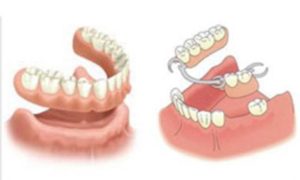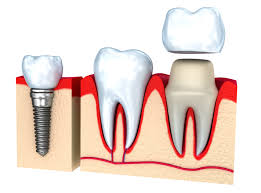Dental Services
The AGD strongly recommends that a dentist or hygienist perform a dental cleaning every six months. This professional dental cleaning reinforces the home-care oral health regimen of brushing and flossing and gives the dentist an opportunity to locate areas in the mouth that may need special attention.
All of our hygienists are dedicated to giving you the best possible cleaning experience they can. Lori, Mary O., and Mary B. have extensive experience and love to share their knowledge. Their priority is to make sure you leave our office with the knowledge you need to maintain your oral health at home. You may even be given some homework, for example, Mary Bobbett is famous for handing patients a tongue flosser on their way out. Lori says “I dont care what you use to floss just get in between those teeth!” Mary Olive
During a dental cleaning, you’ll receive diagnostic and preventive services from your dentist as well as any needed educational information.
Diagnostic services may include:
- Reviewing and updating medical history, including information about heart problems, pregnancy, diabetes and medications, which may have an impact on your oral health
- Oral cancer examination and screening
- Evaluation of gum tissue
- Checking biting, chewing and swallowing patterns
- X-rays or examination of teeth to detect decay
- Referral to specialists for specific treatment
Preventive services may include:
- Removal of plaque and tartar
- Stain removal
- Fluoride application
- Sealants (for children)
- Polishing teeth, including fillings and crowns
- Cleaning and adjustment of dentures and partial dentures
Educational services may include:
- Tooth brushing and flossing instructions
- Nutritional counseling
- Recommendations for future treatment: when to return for follow-up hygiene treatment, periodontal (gum) concerns or restorative options
- Evaluation of self-care effectiveness
- Tobacco-cessation counseling
If your hands bled when you washed them, you would be concerned. Yet, many people think it’s normal if their gums bleed when they brush or floss.
Swollen and bleeding gums are early signs that your gums are infected with bacteria. If nothing is done, the infection can spread and destroy the structures that support your teeth in your jawbone. Eventually, your teeth can become so loose that they have to be extracted.
“Perio” means around, and “dontal” refers to teeth. Periodontal diseases are infections of the structures around the teeth, which include the gums, periodontal ligament and alveolar bone.
At our office we do offer minor periodontal care such as full mouth debridements and periodontal scaling and root planing. These treatments require diagnosis from the Dr first which is why it is very important to have a Dr. evaluate your oral cavity at least once a year. For more extreme cases Dr. will happily referr you to a specialists she knows and trusts with your dental care. Once diagnosed with periodontal disease and after your periodontal procedure the Dr more than likey will reccomend you visit our office for “periodonatal maintenace” every 4 months until your condition has improved or dissapated. This, of course, is for Dr. Bobbett to determine.
Sealants are usually covered 100% by insurance as a preventive service for children under a certain age (according to your eligibilty and benefits).
Sealants are mechanically and/or chemically prepared and cover the enamel surface of the tooth which seal and protect the area from decay. Our hygienests and dental assistants are fully trained to comeplete this service.
Only the dentist can diagnose tooth decay by looking at the patients most current X-Rays (usually taken once a year during your dental cleanings) and by examination of the patients oral cavity.
Dr. Bobbett will first remove the decay and then fill it with composite resin (tooth-colored filling material) in order to bring the tooth back to its normal shape and function.
About 20 years ago Dr. Bobbett decided to discontinue using amalgam (silver fillings) to fill a cavity and began using composite resin. Many of our patients dislike the look of their old amalgam fillings and opt to have them replaced for the tooth colored material. Dr. Bobbett is more than happy to help give you your best smile.
Crowns and Bridges are fixed prosthetic devices that are cemented onto existing teeth or implants, by a dentist or prosthodontist. Crowns are used most commonly to entirely cover or “cap” a damaged tooth or cover an implant. Your dentist may recommend a crown to:
- Replace a large filling when there isn’t enough tooth remaining
- Protect a weak tooth from fracturing
- Restore a fractured tooth
- Attach a bridge
- Cover a dental implant;
- Cover a discolored or poorly shaped tooth
- Cover a tooth that has had root canal treatment
Gaps left by missing teeth eventually cause the remaining teeth to shift resulting in a bad bite. This can also lead to gum disease and TMJ disorders. Bridges are commonly used if you’re missing one or more teeth. They cover the space where the teeth are missing and are cemented to natural teeth or implants surrounding the space.
Dental implants are necessary when you have missing teeth, but either cannot or do not want to get dentures, bridges or crowns. It is important to replace a lost tooth, as the consequences of removing/losing a tooth and doing nothing can grow into a much larger problem as time goes on.
Procedure:
A dental implant consists of 3 major components: The Implant, The Abutment, The Crown.
- The implant is the part that is embedded in your jawbone that provides the base for rest of the structure.
- The abutment is titanium and zirconium, it attaches to the implant and provides a structure for a sculpted porcelain crown to connect to.
- The crown is the part visible above the gumline. This is the ‘tooth’ portion of the implant that works and looks like a natural tooth.
A denture is a removable replacement for missing teeth and surrounding tissues. Two types of dentures are available: complete and partial dentures.
Complete dentures are used when all the teeth are missing, while partial dentures are used when some natural teeth remain.
Complete Dentures:
Complete dentures can be either “conventional” or “immediate.”
Made after the teeth have been removed and the gum tissue has begun to heal, a conventional denture is ready for placement in the mouth about eight to 12 weeks after the teeth have been removed.
Immediate dentures are made in advance and can be positioned as soon as the teeth are removed. As a result, the wearer does not have to be without teeth during the healing period. However, bones and gums shrink over time, especially during the healing period following tooth removal. Therefore a disadvantage of immediate dentures compared with conventional dentures is that they require more adjustments to fit properly during the healing process and generally should only be considered a temporary solution until conventional dentures can be made.
Partial Dentures:
A removable partial denture or bridge usually consists of replacement teeth attached to a pink or gum-colored plastic base, which is sometimes connected by metal framework that holds the denture in place.
Partial dentures are used when one or more natural teeth remain in the upper or lower jaw.
Not only does a partial denture fill in the spaces created by missing teeth, it prevents other teeth from changing position. A precision partial denture is removable and has internal attachments rather than clasps that attach to the adjacent crowns. This is a more natural-looking appliance.
Dental veneers (sometimes called porcelain veneers or dental porcelain laminates) are wafer-thin, custom-made shells of tooth-colored materials designed to cover the front surface of teeth to improve their appearance. These shells are bonded to the front of the teeth changing their color, shape, size, or length.




